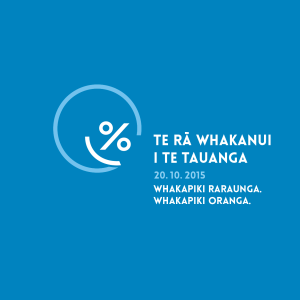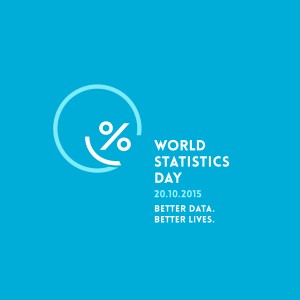World Statistics Day
[this post by Julie Middleton]
Today is World Statistics Day, and statisticians all over the world will be showcasing the value of their work under the theme ‘Better data, better lives’.
To mark the day, Statistics New Zealand is putting out three useful resources:[
1: An animated infographic that expresses the value of statistics to the economy and people as they go about their day-to-day lives;
2: A video that summarises in two minutes changes in New Zealand’s population over the last 150 years;
3: A video that summarises the highs and lows of 30 years of labour market statistics.
World Statistics Day was proclaimed by the United Nations General Assembly in 2010 to recognise the importance of statistics in shaping our societies. National and regional statistical days already existed in more than 100 countries, but the General Assembly’s adoption of this international day as 20 October brought extra momentum. That first World Statistics Day in October 2010 was marked in more than 130 countries and areas.
According to UNStats, this year marks an important cornerstone for official statistics, with the conclusion of the Millennium Development Goals (see how countries have fared here), the post-2015 development agenda, the data revolution (see what the Data Revolution Group set up by UN Secretary-General Ban Ki-Moon has to say here), the preparations for the 2020 World Population and Housing Census Programme and the likes.
One cute initiative of UNStats is to translate the English logo for World Statistics Day into many of the languages of the world. We couldn’t miss the opportunity to have UNStats do one in the first language of this country, te reo Māori. Te tino kē hoki o te moko nā! (Nice logo!)

You can download logos in English, Māori and dozens of other languages from the UNStats site here.
One important initiative of the UN for this year’s commemoration is the launch, at its New York headquarters, of the report The World’s Women 2015: Trends and Statistics. The report is produced every five years under the Beijing Platform for Action, which was adopted at the Fourth World Conference on Women in 1995.
The eight chapters of the report cover several critical areas of policy concerns identified in that landmark 1995 conference: population and families; health; education; work; power and decision-making; violence against women; environment; and poverty. It takes a life-cycle approach in revealing the experiences of women and men during different periods of life.
Thomas Lumley (@tslumley) is Professor of Biostatistics at the University of Auckland. His research interests include semiparametric models, survey sampling, statistical computing, foundations of statistics, and whatever methodological problems his medical collaborators come up with. He also blogs at Biased and Inefficient See all posts by Thomas Lumley »
